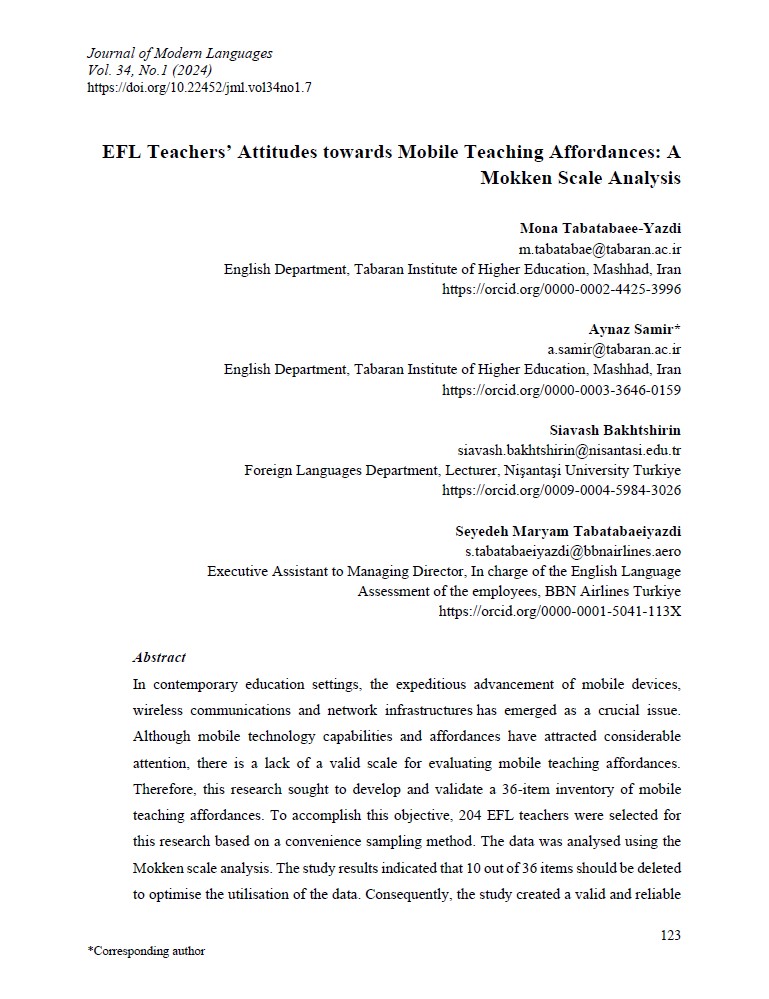EFL Teachers’ Attitudes towards Mobile Teaching Affordances: A Mokken Scale Analysis
Main Article Content
Abstract
In contemporary education settings, the expeditious advancement of mobile devices, wireless communications and network infrastructures has emerged as a crucial issue. Although mobile technology capabilities and affordances have attracted considerable attention, there is a lack of a valid scale for evaluating mobile teaching affordances. Therefore, this research sought to develop and validate a 36-item inventory of mobile teaching affordances. To accomplish this objective, 204 EFL teachers in this research utilising the convenience sampling method. The data was analysed using the Mokken scale analysis. The study results indicated that 10 out of 36 items should be deleted to optimise the utilisation of the data. Consequently, the study created a valid and reliable 26-item inventory that could be used to measure mobile teaching affordance in EFL or ESL teaching contexts. The research findings suggested that the newly created scale is an invaluable instrument for evaluating the perspectives of EFL teachers regarding the potential benefits of mobile teaching. Furthermore, it can effectively pinpoint areas where teachers may require further development in their understanding of and proficiency in utilising mobile teaching methods. These revelations can also act as a basis for developing instructional programmes aimed at empowering EFL teachers to seamlessly incorporate mobile devices into their pedagogical approaches, thereby enhancing their overall effectiveness. The study’s findings can be used by teachers, learners and researchers in educational systems.

